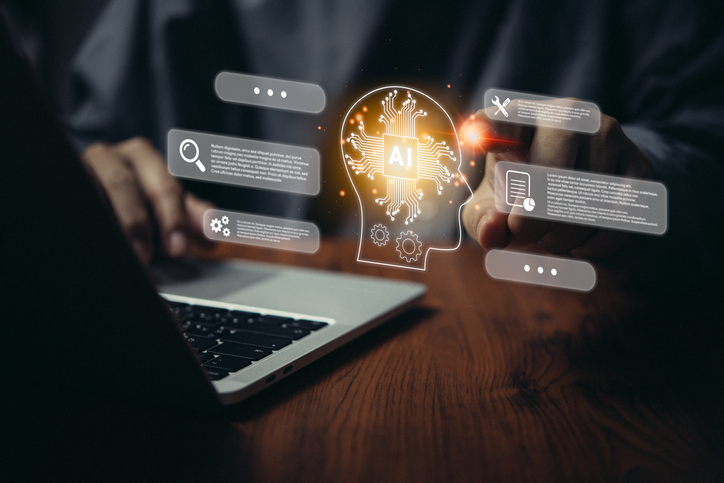
Sit still, smile and shoot – smile optional. That’s essentially all health insurance members, patients and customers of other businesses using a newly expanded technology by Binah.ai will need to do to get a blood pressure reading.
The Tel Aviv-Yafo, Israel-based company, which also has offices in Japan, United Arab Emirates and the United States, made the contactless, video-based blood pressure measurement technology commercially available to businesses. Smartphones have been used to capture blood pressure for several years but they require additional hardware like a bluetooth-connected pressure cuff, for instance.
The capability expands its health data platform, and can be used with most smartphones, tablets or laptops. The technology analyzes the light reflected from bare skin on a person’s face, using an optical technique known as photoplethysmography (PPG). Advanced artificial intelligence and complex algorithms are used to process the light signal and return a reading without the need for a finger clip, arm cuff or other hardware.
Like the majority of lower tech home blood pressure cuffs, Binah.ai’s technology is yet not FDA-approved. David Maman, cofounder and CEO of Binah.ai, says the company is taking preliminary steps to pursue regulatory approval, but he doesn’t expect it to be approved this year.
According to the company’s own testing of the device on 260 patients, the technology is accurate to within 11 standard deviations (so it could be 11 points higher or lower) on systolic blood pressure – the top number – and within eight standard deviations for diastolic blood pressure, Maman says. That testing was done at Sheba Medical Center at Tel Hashomer, Israel’s largest hospital, and several other clinical settings during the past six months. Results have not yet been published.
Blood pressure monitor accuracy must be within 12 standard deviations for systolic and/or eight standard deviations for diastolic to be considered accurate enough for home use, based on a universal standard for validating the devices. However, Binah.ai, is intensively working improve the technology so that readings are within six standard deviations, or accurate enough for clinical use, and Maman is bullish about that happening soon. “We will get there within the next six months,” he says.

The Power of One: Redefining Healthcare with an AI-Driven Unified Platform
In a landscape where complexity has long been the norm, the power of one lies not just in unification, but in intelligence and automation.
The company says its AI-powered contactless BP measurement technology is the first of its kind, expanding on their contactless, video-based measurement of other vitals ranging from heart rate and heart rate variability to respiration rate and oxygen saturation. Ultimately, despite the considerable investment of time and money required, Maman says the company aims to get medical approval for all its vital sign measuring technologies.
Some research has cast doubt on the usefulness of home blood pressure monitoring devices, like a 2017 study published in the American Journal of Hypertension. But even in the past half decade, there’s been improvement. A 2020 British study concluded that doctors could be confident of patients’ home BP monitors if those were validated and less than five years old. And it’s become increasingly common for physicians to recommend patients not only to have BP checked regularly in a clinical setting – but at home, as well, especially if they have high blood pressure or are at risk for hypertension.
Hardware-free, contactless technology promises to make it easier for people to get a BP reading, and have that delivered to a health provider. But the ease-of-use market isn’t limited to contactless PPG technology. Wearables, from the Apple Watch, to NASA-level, medical-grade technology, like that from Ejenta, are allowing consumers to get instant clinical information at home that they can share with their physicians.
As for contactless blood pressure reading, like with Binah.ai’s technology, improvements are still being made – and needed to reach clinical accuracy, let alone consumer-grade accuracy that’s demonstrated through a published study. Right now, as researchers point out in a 2021 review, there’s not enough published research to properly assess contactless BP monitors.
But that doesn’t mean there isn’t a market for it.
Binah.ai has already rolled out contactless BP monitoring as an addition to its health data platform to some existing customers, including large insurers Momentum in South Africa and Generale in Europe. Maman says they’ve also provided it to several organizations in the U.S. as well, including two in telehealth, one in corporate wellness and a laptop manufacturer. He declined to name the companies.
For customers purchasing the technology from Binah.ai, the cost depends on scale. It’s around $30 per year per user for a company rolling it out to 10,000 people, Maman says, and $12 per year per user for an organization rolling it out to 100,000. He added that the company provided a price quote to one of the largest insurance players in Asia, which he declined to name, of about $1 per user per year for 50 million users.
Given the market for home-based vital signs monitoring, there’s considerable pressure to improve that technology. Binah.ai takes pains to explain how it keeps customers’ data private, while optimizing usability – the company says its PPG technology works for all skin tones – and improving accuracy. “Eventually everything is down to three things,” Maman says, “accuracy – the most important; usability; and privacy.”
Photo: yongyuan, Getty Images








